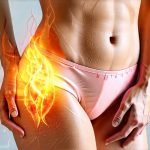Navigating life after an illness can be physically and emotionally taxing. Often overlooked amidst recovery is the impact on bladder function. Many illnesses – from severe infections like urinary tract infections to chronic conditions requiring extensive medication, even something as debilitating as a long bout of COVID-19 – can temporarily or sometimes chronically affect how our bladders work. This isn’t necessarily a sign of lasting damage, but rather a common consequence of the body undergoing stress and change. Understanding this connection and proactively adjusting your home environment and daily routines can significantly improve comfort and quality of life during recovery, reducing anxiety and fostering a sense of control.
The goal isn’t about fixing a broken bladder (though professional medical evaluation is crucial if concerns persist); it’s about creating a supportive ecosystem that minimizes stress on the urinary system while you rebuild strength and regain normalcy. This involves thoughtful adjustments to your living space, strategic planning around daily activities, and embracing self-compassion as you navigate this period of vulnerability. It’s about making small changes that collectively make a big difference in easing discomfort and reducing worry related to bladder function.
Creating a Bladder-Friendly Home Environment
A home should be a sanctuary, especially during recovery. But often, seemingly innocuous aspects of our homes can inadvertently exacerbate bladder issues. The key is minimizing stress points – physical and emotional – that might trigger urgency or discomfort. This starts with accessibility and ease of movement. Consider rearranging furniture to create wider pathways, reducing tripping hazards, and ensuring clear routes between frequently used spaces like the bedroom, bathroom, and kitchen. Prioritizing convenience reduces anxiety and minimizes rushing, which can put undue pressure on the bladder.
Lighting is also vital. Well-lit paths, especially at night, lessen the risk of falls and reduce stress associated with navigating in the dark. Nightlights are invaluable, removing the need to stumble blindly toward the bathroom. Beyond physical accessibility, consider soundproofing or minimizing noise distractions. Sudden loud noises can sometimes trigger urgency sensations for individuals experiencing bladder sensitivity. A calm and peaceful environment promotes relaxation which is directly linked to better bladder control. To further enhance your home environment, explore these helpful tips for urological support.
Finally, think about bathroom accessibility. If mobility is limited, simple modifications like grab bars in the shower and near the toilet can provide added security and confidence. A raised toilet seat may also be helpful. These aren’t permanent changes necessarily; they are temporary accommodations designed to support you during your recovery process. It’s about creating a safe and comfortable space where you feel secure and empowered.
Managing Bathroom Trips & Timing
One of the most common concerns after illness is increased urinary frequency or urgency. Developing a proactive bathroom plan can significantly reduce anxiety. This doesn’t mean constantly rushing to the toilet; it means planned trips, rather than reactive ones. – Try timed voiding: Going to the bathroom at regular intervals (e.g., every 2-3 hours), even if you don’t feel a strong urge, can help retrain your bladder and prevent overwhelming sensations. – Keep a bladder diary: This simple act of tracking when you urinate and the associated urgency levels helps identify patterns and potential triggers. It’s also valuable information to share with your healthcare provider.
Importantly, avoid restricting fluids drastically. While it might seem counterintuitive, severe fluid restriction can actually irritate the bladder. Focus on spreading your fluid intake throughout the day, rather than consuming large amounts at once. Choose hydrating options that are less irritating to the bladder (see section below). For optimal hydration strategies, consider these hydration techniques for bladder support. Staying adequately hydrated is crucial for overall health and supports optimal bladder function. Remember, this isn’t about punishment; it’s about thoughtful management.
Dietary Considerations & Bladder Irritants
What you eat and drink plays a surprising role in bladder health. Certain foods and beverages are known bladder irritants that can exacerbate symptoms like urgency or frequency. Common culprits include: – Caffeine (coffee, tea, soda) – Alcohol – Spicy foods – Acidic fruits (citrus, tomatoes) – Artificial sweeteners – Carbonated beverages. Experimenting with eliminating these from your diet, one at a time, can help identify personal triggers.
However, don’t focus solely on what to avoid. Prioritize bladder-friendly options that promote hydration and overall health. Water is obviously the best choice, but herbal teas (non-caffeinated), diluted fruit juices (avoiding citrus), and certain vegetables with high water content (cucumber, watermelon) can also be beneficial. A balanced diet rich in fiber can prevent constipation, which can put added pressure on the bladder. You might find these high-fiber snack options particularly helpful. Listening to your body and paying attention to how different foods affect you is key.
The Power of Relaxation & Stress Management
Stress has a profound impact on bladder function. When we’re stressed, our bodies release hormones that can increase urgency and frequency. Incorporating relaxation techniques into your daily routine is therefore essential for gentle bladder support. – Deep breathing exercises: Simple diaphragmatic breathing can calm the nervous system and reduce stress. – Mindfulness meditation: Even 5-10 minutes a day can make a significant difference. – Gentle exercise (yoga, walking): Physical activity releases endorphins which have mood-boosting effects.
Don’t underestimate the importance of rest. Allowing your body adequate time to recover is crucial for overall healing, including bladder function. Avoid overexertion and prioritize activities that bring you joy and relaxation. For a more holistic approach to well-being, consider integrating these gentle yoga practices into your routine. Creating a calming environment and managing stress levels are powerful tools in supporting your recovery. Remember that self-compassion is vital; be kind to yourself during this process and acknowledge that setbacks are normal. To further aid relaxation, you could explore creating a relaxing home environment.
Finally, remember the importance of proactive care even after recovery. A long-term approach to bladder health includes mindful habits and seeking support when needed. You can explore strategies for supporting your bladder’s healing process, especially if you’ve recently taken antibiotics.





















